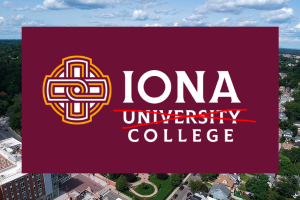Keep tabs on your tuition: Student debt, a costly experience and the College’s undisclosed budget

Make sure to keep track of your financial aid package and student loans.
December 4, 2014
I recently clicked on a Thought Catalog article entitled, “How to pay off student loans in five years.” Since my expiration date as an undergraduate is nearing, I’ve been reading more articles along these lines.
I think as students we know firsthand that the price of education in this country is out of control. But we don’t understand what it means to have to pay off the debt — not yet at least. Unless you’re one of the few full-tuition scholarship recipients, I’m guessing you’re wondering how you’re going to be able to pay off those loans you are accruing from semester to semester.
The average amount of student debt that college students graduate with is $25,000. To be honest, I thought it was much higher. But when there’s more than 6% interest on that amount, the number gets much scarier.
If you pay $150 a month, it will take you 42 years and eight months to pay off that debt. In this case, you will be paying a total interest of $51,000 by taking that much time. If you up it to $200 a month it will take you 18 years and three months due to an added $18,000 in interest. While that is much better, I certainly don’t like the idea of being 40 and finally paying off my college loans. I don’t know about you, but that’s not the type of throwback that should be celebrated.
If you’re a freshman, I’d say you made a pretty decent financial decision in choosing Iona. In terms of tuition prices, Iona isn’t on the higher end, but it’s still important to realize the increases that can happen from year to year and the fees that can augment that initial price tag.
When I entered school in 2011, the tuition was $28,192, and since then, it has risen to $31,880 for the 2014-2015 academic year.
As I freshman, I paid over $6,000 for room and board and another $1,500 in fees. Even moving off campus will cost you. I pay roughly $6000 a year between rent, utilities and food.
It’s easy to ignore the reality of these numbers when we don’t have to pay for it just yet. But those loans are sitting there and just six months after graduation, when we have to start paying those loans, they’re going to be impossible to ignore.
It’s time we take responsibility for our money and where it’s going by asking where exactly it is going.
As I’ve been trying to get a hold of the answer myself, I recently checked my financial aid package. I noticed that my scholarship had remained the same since last year, but the tuition had increased.
When I received my scholarship offer from Iona, it clearly stated that my scholarship would be the percentage value of whatever the tuition was set at each year. In other words, my scholarship should increase as tuition increases and not stay at a set dollar amount.
The college owed me over $400 for this semester, and it would have overcharged me the same amount next semester if I hadn’t caught the error.
Student Financial Services (SFS) still owes me over $700 from my sophomore year because the same mistake was made then. And if I hadn’t studied abroad during the spring semester of my sophomore year, this amount would have been over $1,400.
If I hadn’t thought take a look at my account, or studied abroad that semester, I would have paid Iona over $2,200 that I was rightfully mine.
During my meeting with my financial aid officer, she asked why I hadn’t found the mistake earlier. My response was that I didn’t think it was my job to adjust my scholarship from year to year. While I still don’t think it’s my job, I do realize that it is my responsibility. I shouldn’t assume things are being taken care of when it’s a matter of thousands of dollars.
So, if I could offer some not-so-gentle advice, check your financial aid packages and scholarships to make sure that you’re not being overcharged as well.
But it shouldn’t just be our job to know where our money is going. The school should be responsible. After all, it determines where our tuition goes.
When I went to SFS to get my money back, I thought it would be a no-brainer. However, I was given a hard time, and I felt as though I didn’t have a right to be reimbursed.
At first, my financial aid officer told me she might not be able to approve the refund to my account because they ‘don’t have the funds.’
My response? Those aren’t the school’s funds. That is my money.
Miscalculated scholarships and overcharged tuition bills should not be included in the college’s ‘funds.’
In fact, what are Iona’s funds? Where are they allocated? What are the school’s priorities when allocating funds?
The college does not publish its budget publicly, so the answers to questions like these are not readily available for students.
I would like to formally request that the administration give students access to the budget and extend a policy of transparency.
To my fellow classmates: would you like to know how your tuition dollars are being spent? If so, take action.
Join me in tweeting at Dr. Nyre @ICPres_DrNyre and Iona College @ionacollege to ask the administration to publish the budget and make this information accessible.
To contact the Ionian’s Alexandra Vinci, e-mail her at [email protected]







